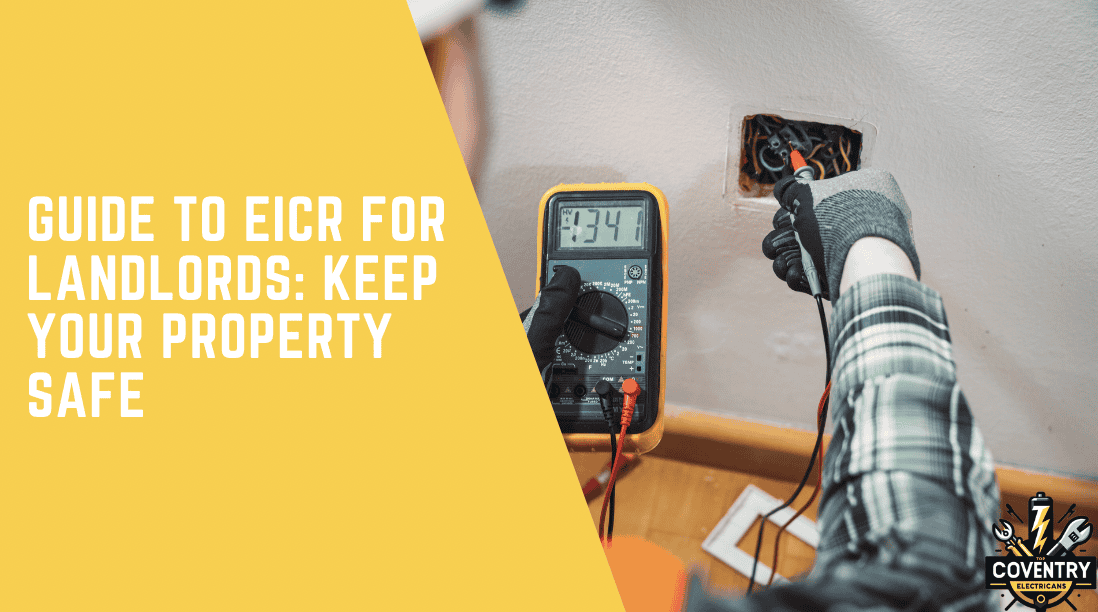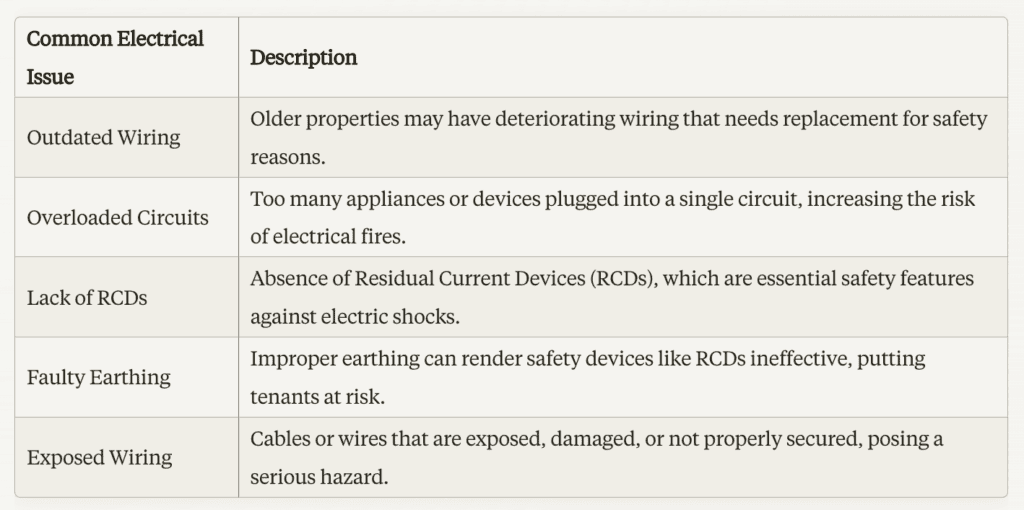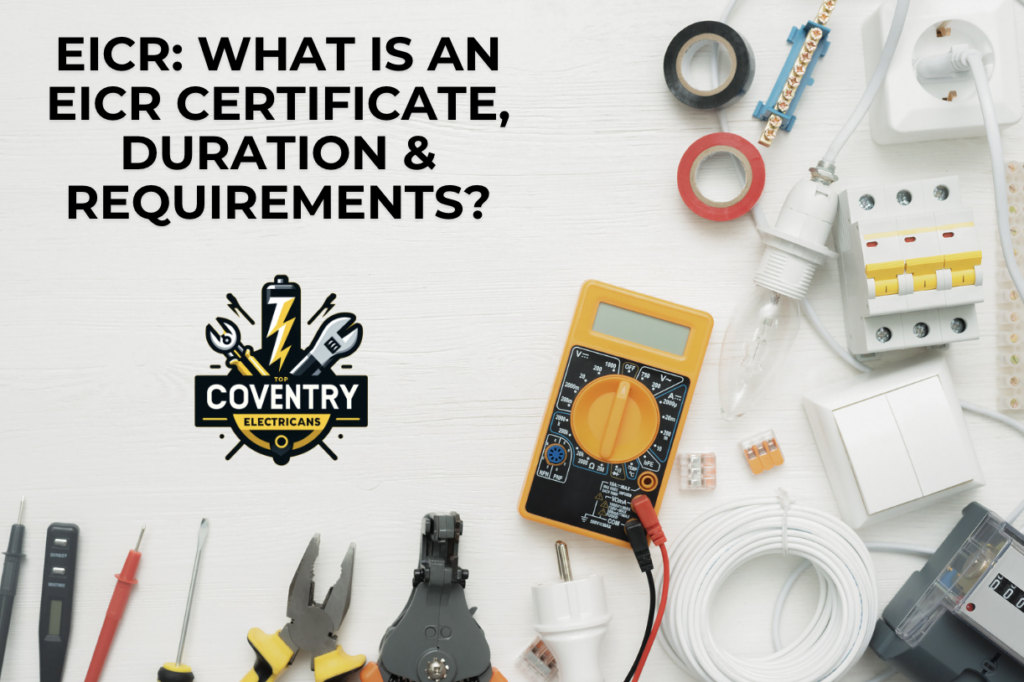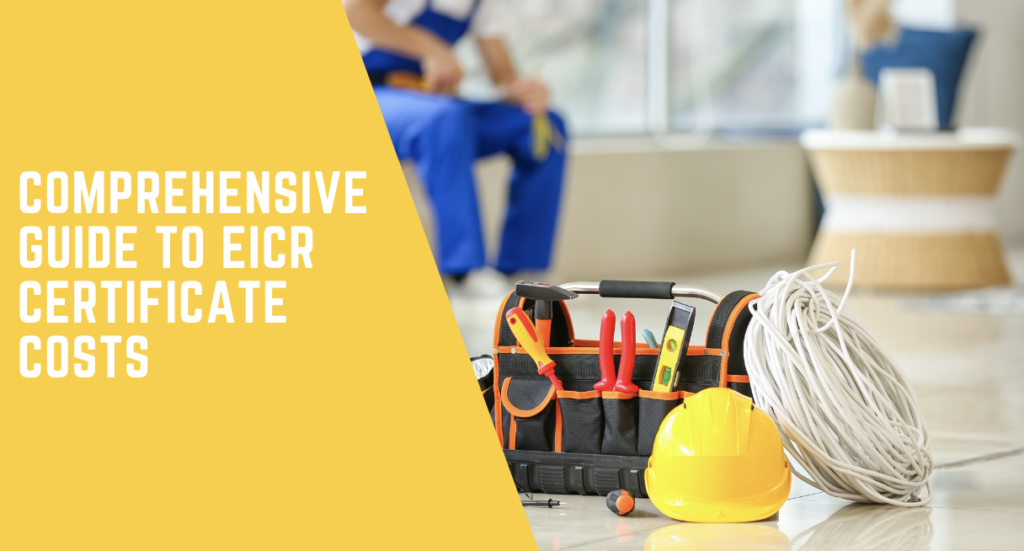

Helpful Guide To EICR For Landlords: Keep Your Property Safe & Compliant
- ,
- , EICR
You’ve probably heard the term “EICR” tossed around as a landlord. But what does it mean, and why is it so important? Well, buckle up, folks, because we’re about to dive headfirst into the world of Electrical Installation Condition Reports (EICRs) – a crucial aspect of maintaining a safe and legally compliant rental property as outlined in the government guidance.
Key Takeaways For Landlords:
Ensuring Electrical Safety and Legal Compliance An Electrical Installation Condition Report (EICR) is a comprehensive assessment of a rental property’s electrical installations conducted by a qualified and registered electrician. Landlords need to ensure the safety of their tenants and comply with legal requirements, as failing to have a valid EICR can result in hefty fines or legal action.
Regular EICR Inspections: A Necessity, Not a Choice Landlords must arrange for an electrical installation condition report every five years or upon a change of tenancy, whichever comes first. Properties classified as HMOs (Houses in Multiple Occupation) must undergo EICRs more frequently, typically every five years or whenever there’s a material change in the installation, whichever comes sooner.
Proactive Approach to Property Value and Tenant Retention Regular EICRs ensure electrical safety and legal compliance and increase property value and tenant retention. A well-maintained electrical system is a selling point for potential buyers or new tenants, and happy, safe tenants are more likely to remain in the property, reducing costly turnover and vacancy periods.
What is an EICR for Landlords?
An EICR, or Electrical Installation Condition Report, is a comprehensive assessment of the electrical installations within your rental property. Consider it a thorough health check-up for your property’s electrical system conducted by a qualified and registered electrician.
This electrical safety report evaluates every nook and cranny of your electrical setup, from the main fuse board to the smallest light switch, ensuring everything is up to snuff and compliant with the latest safety standards. It’s like having a personal trainer for your property’s electrical fitness – identifying potential hazards, defects, or areas needing improvement.
For a helpful and more thorough explanation of EICR Certificates, why not visit or guide: What Is An EICR Certificate, Duration & Requirements?

Why is an EICR for Landlords Important?
Imagine this: You’re a tenant, settling into your new rental home, blissfully unaware of the potential electrical dangers lurking behind the walls. Suddenly, a spark ignites, and you’re dealing with a full-blown electrical fire before you know it. Scary stuff, right?
That’s where an EICR comes in. By ensuring your rental property’s electrical system is up to code, you protect your investment and safeguard your tenants’ lives. After all, who wants to deal with an electrical mishap’s legal and financial fallout?
But it’s not just about safety; an EICR is also a legal requirement in many areas. Failing to have one could land you in hot water with the local authorities and potentially open the door to hefty fines or legal action. Trust us; you don’t want to be on the wrong side of the law regarding electrical safety.
Did You Know
According to a survey by the National Landlords Association, nearly one-third of landlords in the UK were unaware of their legal obligations regarding electrical safety in rental properties.
How Often Should an EICR be Carried Out for Landlords?
You might think, “Okay, I get it; an EICR is important, but how often do I need one?” The general rule of thumb is that landlords should arrange for an EICR every five years or upon a change of tenancy, whichever comes first.
But hold up, there’s a catch! Suppose your property is an HMO (House in Multiple Occupation). In that case, you’ll need to get an EICR more frequently – typically every five years or whenever there’s a material change in the installation, whichever comes sooner.
Find out more on this – How Long Does An EICR Last?

Benefits of Regular EICRs for Landlords
Regular EICRs might seem like a hassle, but trust us; the benefits far outweigh the inconvenience:
Peace of Mind: Knowing that your rental property’s electrical system is up to code and safe for your tenants is priceless. Sleep easy, folks!
Reduced Liability: By staying on top of your EICR obligations, you minimise the risk of legal action or fines due to non-compliance.
Increased Property Value: A well-maintained electrical system is a selling point for potential buyers or new tenants, adding value to your investment. Do I need An EICR When Selling My Property?
Tenant Retention: Happy, safe tenants are likelier to stick around, reducing costly turnover and vacancy periods.
What Happens During an EICR for Landlords?
So, you’ve booked your EICR, but what exactly goes down during this electrical inspection and test? Here’s a quick rundown:
Visual Inspection: Your qualified electrician will examine all the accessible parts of your electrical installation for any apparent defects or hazards.
Testing: Next up, it’s time for the nitty-gritty testing phase. Your electrician will use specialised equipment which will bring up electrical codes c1, c2 c3. These codes will evaluate the safety and functionality of various components, such as switches, sockets, and earthing arrangements.
Documentation: Throughout the process, your electrician will meticulously document their findings, creating a detailed report outlining potential issues, recommendations, and an overall assessment of your electrical installation’s condition.
Recommendations: Based on their findings, your electrician will provide clear recommendations on what needs to be repaired, replaced, or upgraded to bring your property up to code and ensure optimal safety.

Common Electrical Issues Identified During EICRs for Landlords
During an EICR, your electrician might uncover issues ranging from minor hiccups to significant safety concerns. Here are some common culprits:
Outdated Wiring: Older properties may have obsolete or deteriorating wiring that needs to be replaced for safety reasons.
Overloaded Circuits: Too many electrical appliances or devices plugged into a single circuit can cause overloading, increasing the risk of electrical fires.
Lack of RCDs: Residual Current Devices (RCDs) are essential safety features that protect against electric shocks and should be installed in all rental properties.
Faulty Earthing: Improper earthing can render safety devices like RCDs ineffective, putting your tenants at risk.
Exposed Wiring: Cables or wires that are exposed, damaged, or not properly secured can pose a severe hazard.
FAQs About EICRs for Landlords
We know you’ve got questions, and we’ve got answers! Here are some frequently asked questions about EICRs for landlords:
Can I do an EICR myself?
No, sorry. EICRs must be carried out by a qualified and registered electrician. Attempting to do it yourself is not only illegal but also incredibly dangerous.
How much does an EICR cost for landlords?
The cost of an EICR can vary depending on the size and complexity of your rental property, but you can typically expect to pay between £100.00 and £300.00.
For a more detailed breakdown of costs, visit our Comprehensive Guide To EICR Certificate Costs.
What happens if my EICR reveals issues?
If your EICR uncovers any defects or non-compliant issues, your electrician will provide a detailed report outlining what needs to be addressed. You’ll then need to arrange for the necessary repairs or upgrades to be carried out.
Can I rent out my property without an EICR?
In short, no. Renting out a property without a valid EICR is illegal in many areas and can open you to fines and legal action.
How long does an EICR take?
The duration of an EICR can vary depending on the size and complexity of your rental property, but most electrical safety inspection and test take 2-4 hours to complete.
Can a landlord be fined for not having an EICR?
Yes, landlords can face hefty fines for not having a valid Electrical Installation Condition Report (EICR) for their rental properties. The penalties for non-compliance with electrical safety regulations can vary depending on the local authorities and the severity of the offence.
In some cases, landlords may face fines of up to £30,000 or even prosecution if they fail to address electrical hazards identified in the EICR. Landlords must stay on top of their EICR obligations to avoid costly penalties and maintain a safe living environment for their tenants.
How do I report a landlord for not having an EICR?
If your landlord still needs to obtain a mandatory EICR or address electrical safety issues, you can report them to your local council’s environmental health department or housing standards team. Gather evidence like your tenancy agreement, photos of hazards, and correspondence with your landlord. File a formal complaint with the council, providing the property address, landlord’s details, and a description of the issue. Attach your evidence.


